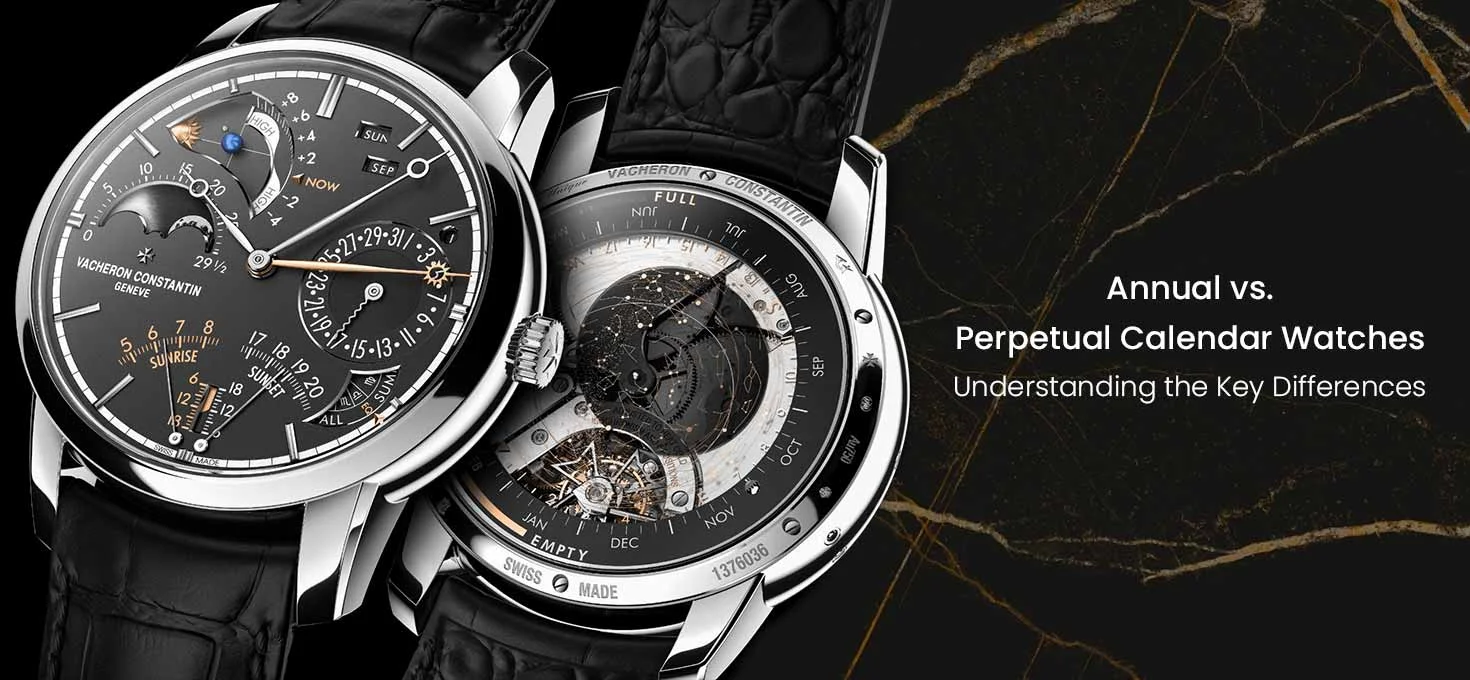 Reading Time: 6 minutes
Reading Time: 6 minutes
When talking about watches, annual and perpetual complications are two of the most popular features among enthusiasts. Though both serve the purpose of keeping track of dates without requiring constant adjustments, they differ in how they handle the complexity of calendars. The annual calendar tracks the varying months in a year except for February as they require just one manual adjustment per year. Perpetual calendars on the other hand are more advanced mechanisms that adjust for leap years all by themselves. This means that they can last for decades or even centuries without the need for any intervention. These complications represent a combination of mechanical ingenuity and elegant design that attract enthusiasts and collectors who love the craft of watchmaking whether for convenience or technical miracle. A favorite in any collection, these watches show a deep appreciation for form and function in the science of timekeeping.
What Are Annual Calendar Watches?
Annual calendar watches are best known for their convenience and practicality displaying the day, date and month with minimal manual adjustment required. These watches automatically count months with 30 or 31 days making them a popular watch for those who appreciate mechanical ingenuity without the hassle of constant corrections, but it needs to be adjusted once a year, at the end of February. Why in February? Because February is the shortest month and it also includes four leap years. This is something that annual calendar watches cannot take into account. Even though the watch handles different time periods of other months smoothly, the unique structure of February requires manual intervention to ensure the correct date is displayed during the remaining 11 months of the year. The mechanism automatically switches between months of 30 and 31 days creating a good balance of annual calendar watch functions and usage for everyday wearers.
The Story Behind Annual Calendar Watches
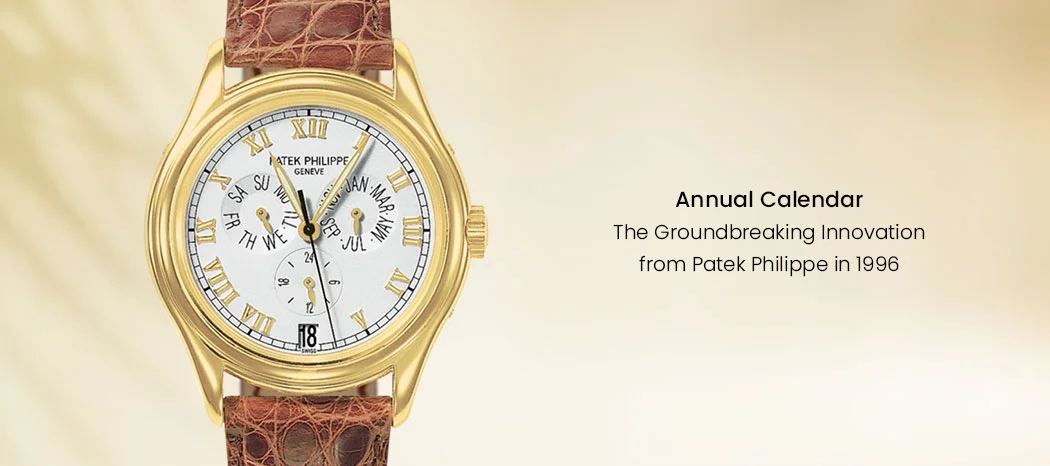
The annual calendar watches genesis began in 1996 when Patek Philippe, a legendary name in watchmaking launched the Patek Philippe ref. 5035. This groundbreaking watch was the first wristwatch to have a calendar complication that required an adjustment only once per year. It is considered as a revolution in the world of timekeeping science. With its annual calendar, Patek Philippe strikes the perfect balance between practicality and mechanical sophistication reinforcing their reputation as a leader in watchmaking innovation by combining functional beauty with refined craftsmanship that would influence future watches.
How Do The Annual Calendar Watches Work?
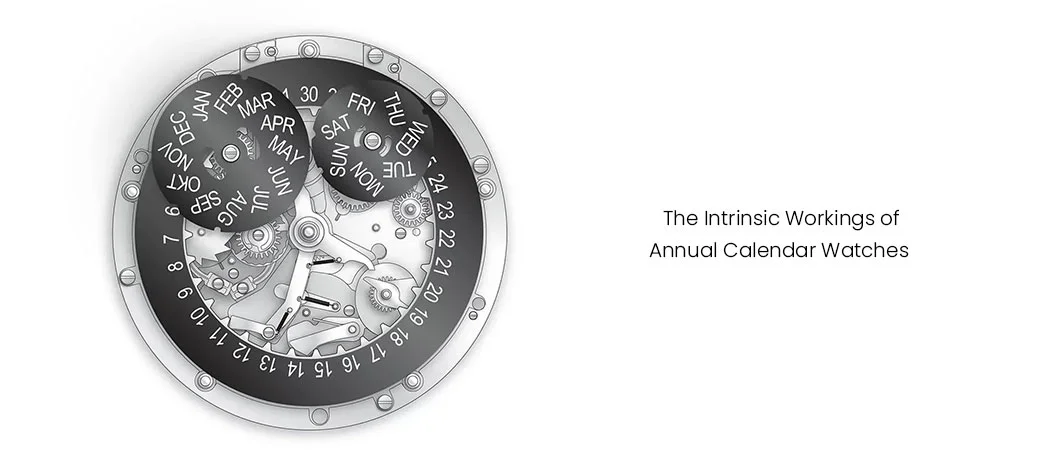
The annual calendar operates on a set of rotating wheels that control the display of the day, date and month. The month wheel has 12 teeth, with the longer 5 teeth representing the 30-day month. These longer teeth provide the mechanism for taking a skip at the 31st day when not required. Additionally, the weekday wheel rotates by a single tooth every day. This ensures that the correct date is always displayed. This complex system allows the watch to automatically adjust for 30- or 31-day months requiring only one adjustment per year making the annual calendar watches accurate and efficient.
Pros And Cons Of The Annual Calendar Watches:
Pros:
- Provides day, date, and month displays in a single glance.
- Automatically adjusts for months with 30 and 31 days and hence minimizing manual corrections.
- Combines mechanical sophistication with ease of use offering a practical yet intricate timepiece.
- Represents a significant innovation in watchmaking blending convenience with craftsmanship.
- Requires only one annual adjustment, eliminating the hassle of monthly resets.
Cons:
- Requires a manual adjustment once a year, specifically at the end of February due to its inability to account for leap years.
- Lacks the long-term precision of perpetual calendars which automatically account for leap years.
- Typically comes with a higher price tag compared to standard calendar watches, reflecting its advanced mechanics.
- Offers fewer options in terms of models and variations when compared to other watch complications.
- Though more complex than basic calendars, it doesn’t achieve the full autonomy of higher-end complications.
What Is A Perpetual Calendar Watch?
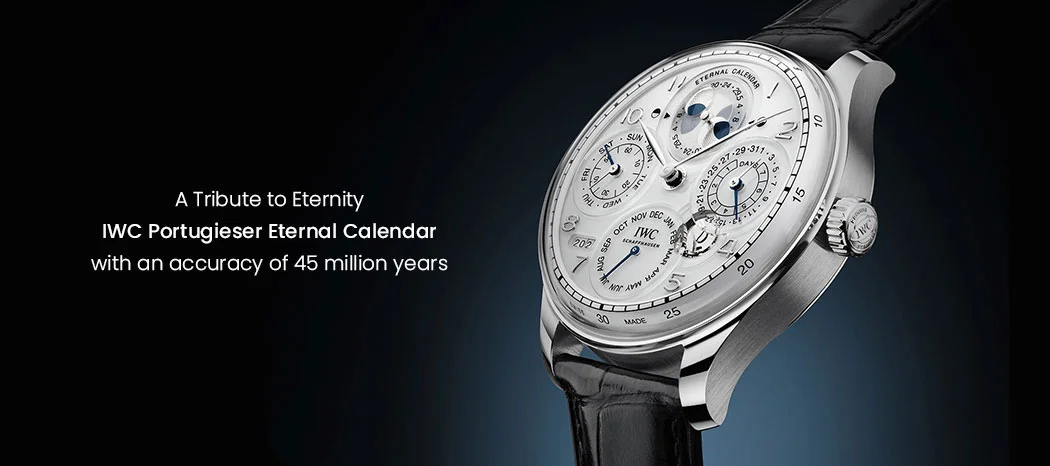
Design of perpetual calendar watches is the engineering pinnacle of watchmaking as it is built to incorporate the detail, month and the day of the month in such a manner that there is no requirement to wind it. What sets these approaches apart from standard calendar watches is that these wrist watches take into consideration the distinct months with regard to their days including February and leap year. This astonishing accuracy is brought about because the watch movement has ‘an inbuilt’ calendar mechanism that continues to operate without interruption until the year 2100. Besides such elements a number of the perpetual calendar watches even with such sophisticated construction have additional features like the moonphase display and leap year counter. There are great many watch enthusiasts and collectors who appreciate precision and what can be statement of such classic timeless watches’ mechanics. Understandably perpetual calendar watches are in general a little bit costlier but the worth of the watch being in perfect accuracy after decades is quite reasonable for people who seek incredibly stylish and well made timepieces.
The Inception Of Perpetual Calendar Watches:
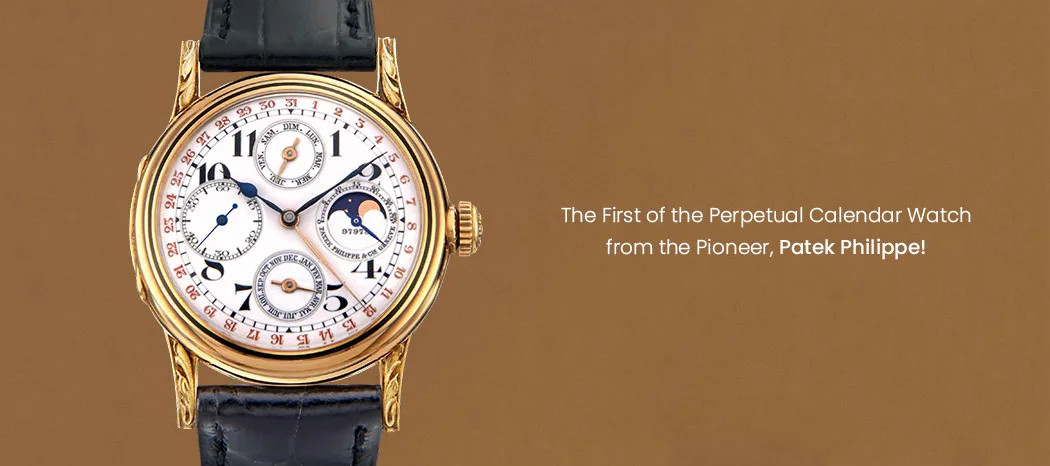
The story of the invention of the perpetual calendar has its earliest roots in 1889, when Patek Philippe applied for a patent for this revolutionary tool. But the real milestone came in 1925 when Patek Philippe launched the world’s first perpetual calendar wristwatch, the P-72. The introduction of this unique product changed everything in the history of the watch manufacturer since they produced a watch that can continuously follow the duration of all the months and leap years without any manual adjustment that will be valid till the year 2100. With the introduction of the P-72 a new standard of timekeeping was reached and Patek Philippe was able to prove yet again that it is a forward-thinking company, creating great innovations where precision and functionality coexist with the art of watch construction.
How Do Perpetual Calendar Watches Work?
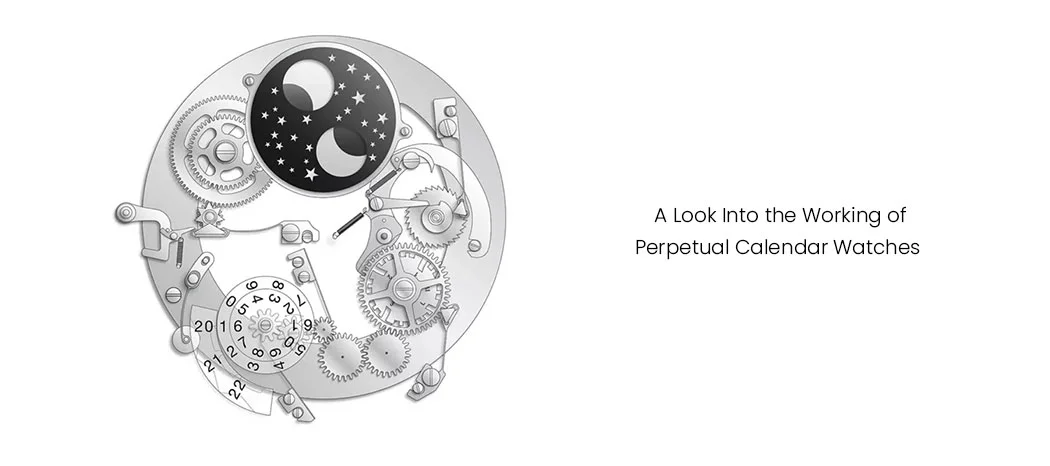
Perpetual calendar watches rely on a complex movement, using a series of wheels, gears and levers to accurately track the passage of time. The key element is the wheel that spins perfectly for every four years to account for leap years in general. Separate mechanisms control the day, date and month, all synchronized using a long lever called the grand lever. This lever moves back and forth to adjust for different month lengths. The correct date is displayed smoothly with the engagement of different wheels. With an amazing interplay of components, this demonstrates the mechanical complexity of the perpetual calendar watches.
Pros:
- Offers precise date accuracy until 2100 without manual adjustments.
- Automatically accounts for leap years and the 28-day month of February.
- Seamlessly distinguishes between 30 and 31-day months, ensuring a hassle-free timekeeping.
- Often includes additional complications such as a moon phase indicator enhancing both functionality and aesthetic appeal.
- Effortlessly manages February’s shorter duration adding to its mechanical sophistication.
Cons:
- The intricate mechanisms contribute to a higher price point making them a significant investment.
- Specialized servicing may be required due to their complex internal workings potentially leading to higher maintenance costs.
- Limited availability of models compared to simpler watch designs which can restrict options for collectors.
- There is a learning curve involved in setting and using these sophisticated timepieces which can be daunting for those unfamiliar with advanced horology.
What Is The Main Difference Between Them?
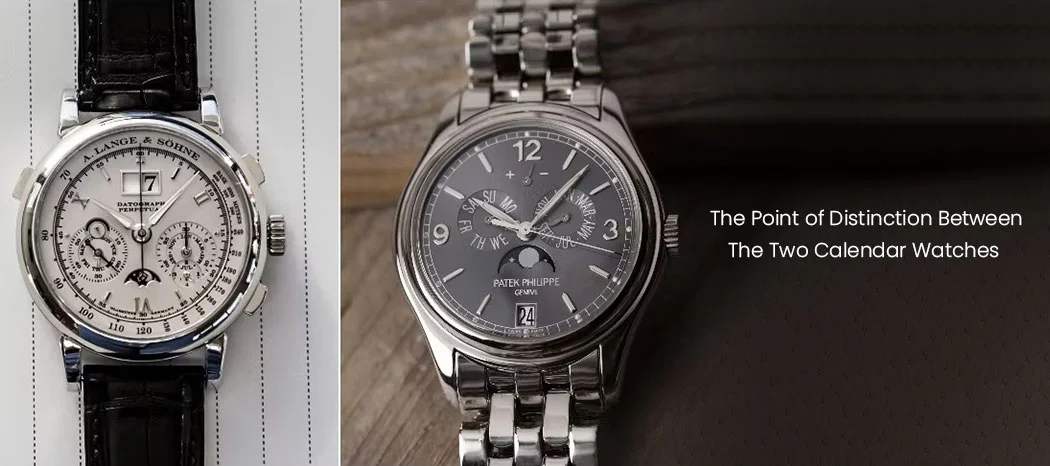
The main difference between annual and perpetual calendar lies in the need for manual adjustment. The annual calendar watches requires an annual setting meanwhile, perpetual calendar watches will work accurately until 2100 without intervention. This difference in functionality results in a higher price for perpetual calendar watches and are also equipped with complex mechanisms made up of hundreds of parts representing high levels of engineering and craftsmanship and therefore the watches retail at a premium compared to annual calendar watches. This complexity not only increases accuracy but it also raises their status in the world of timekeeping.
Kapoor Watch Co.
Kapoor Watch Co. is the prime destination for watch lovers as we offer a carefully selected selection of luxury watches from well known brands. With a commitment to quality and customer satisfaction we provide a great shopping experience. Whether you are looking for a classic mechanical watch or the latest in watch innovations, our knowledgeable staff with a passion for watches is ready to help you find your perfect watch. Visit the website or stop by the Kapoor Watch Co. Stores to discover your next timepiece, with authenticity guaranteed.
The post Annual vs. Perpetual Calendar Watches: Understanding the Key Differences appeared first on Kapoor Watch Co. | Blogs.



